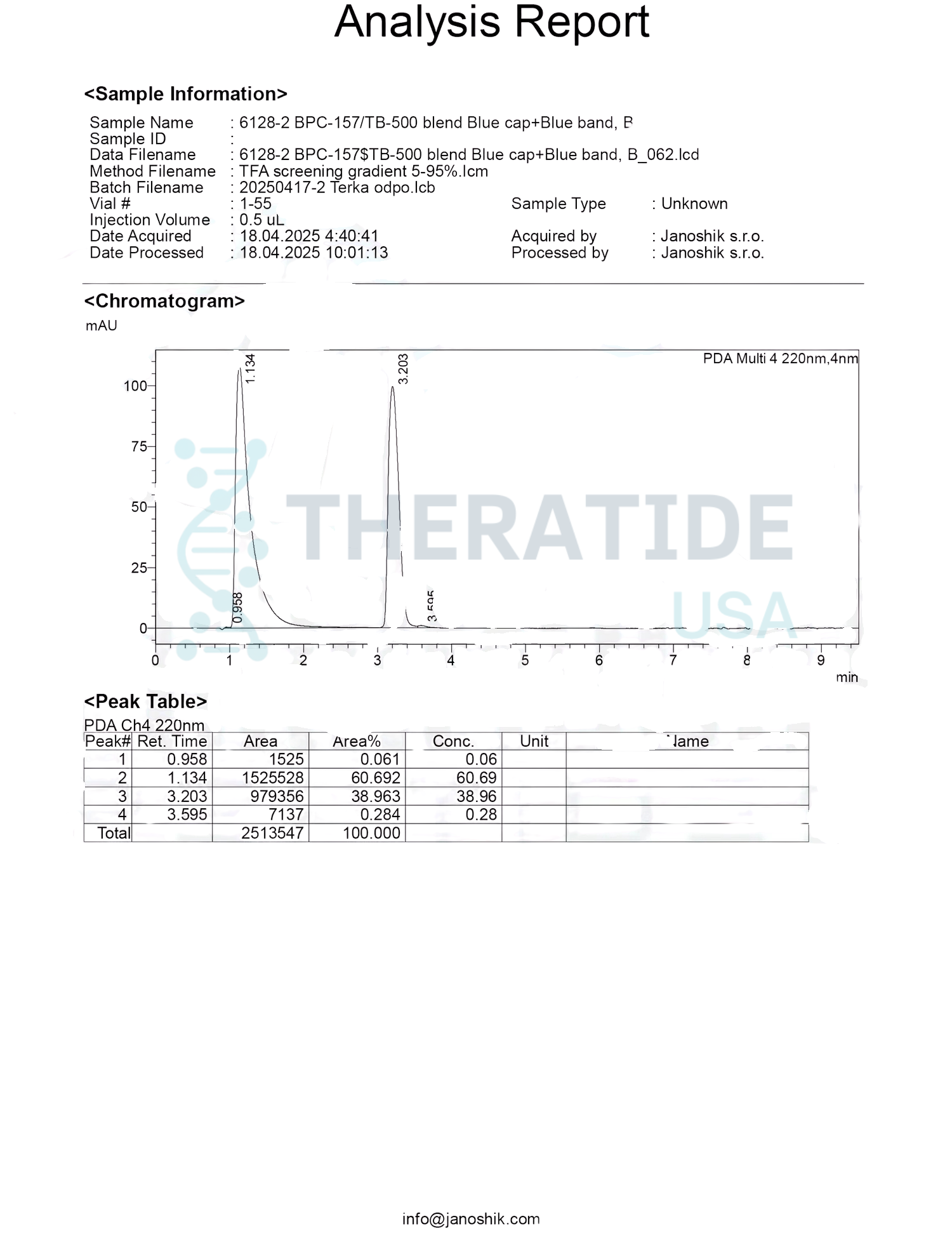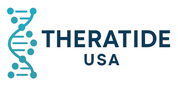Product Overview
Product Overview
Wolverine Blend Overview
The Wolverine Blend is a synergistic combination of BPC-157 and TB-500 peptides, designed to enhance wound healing, tissue regeneration, and recovery from injury. This unique blend takes advantage of the complementary pathways of each peptide, promoting faster and more effective cellular repair, improved collagen deposition, and better modulation of the immune response in injured tissues.
Potential BPC-157 and TB-500 Synergy in Wound Repair
Research reveals that BPC-157 and TB-500, which both help to stimulate wound healing via different biochemical pathways, may have synergistic effects when combined together.
Cell Migration
Successful wound healing depends on fibroblasts, which regulate extracellular matrix production, as well as cells of the immune system. For these cells to do their jobs, they need to move to the location of injury. This movement, called migration, is heavily dependent on the protein actin. Both BPC-157 and TB-500 are important in actin regulation. BPC-157 works at the level of the gene to increase actin production. TB-500, an actin binding protein, helps to sequester actin in areas where it is most useful for building filaments from actin to allow for cell movement. Together, BPC-157 and TB-500 work synergistically to increase the quantity and function of actin and thus increase the rate at which fibroblasts and cells of the immune system migrate to areas of injury.
The Big Picture Involves Growth Hormone
Both TB-500 and BPC-157 interact with growth hormone in the healing process. BPC-157 increases the expression of growth hormone receptors on fibroblasts, boosting the longevity of these cells and thus their ability to promote soft tissue regeneration. With TB-500 on board, the extra growth hormone receptors will not go to waste because the fibroblasts will have adequate stores of actin to make use of their elongated lifespans. Combining TB-500, BPC-157, collagen, and a growth hormone secretagogue is a surefire way to increase rates of wound healing and may one day replace standard treatment regimens as the gold standard.
Resources
- C.-H. Chang et al., “The promoting effect of pentadecapeptide BPC 157 on tendon healing,” J. Appl. Physiol., Oct. 2011. [Physiology.org]
- J. Kim and Y. Jung, “Potential Role of Thymosin Beta 4 in Liver Fibrosis,” Int. J. Mol. Sci., May 2015. [NCBI]
- C.-H. Chang et al., “BPC 157 enhances the growth hormone receptor expression in tendon fibroblasts,” Mol. Basel Switz., Nov. 2014. [NCBI]
- Song et al., “Thymosin β4 levels and rheumatoid arthritis,” Clinical Rheumatology, 2012. [Research Gate]
- Philip et al., “Thymosin β4 Promotes Angiogenesis, Wound Healing, and Hair Follicle Development,” Mech. Ageing Dev., Feb. 2004. [PubMed]
Disclaimer
ALL ARTICLES AND PRODUCT INFORMATION PROVIDED ON THIS WEBSITE ARE FOR INFORMATIONAL AND EDUCATIONAL PURPOSES ONLY.
The products offered on this website are furnished for in-vitro studies only. In-vitro studies (Latin: in glass) are performed outside of the body. These products are not medicines or drugs and have not been approved by the FDA to prevent, treat or cure any medical condition, ailment or disease. Bodily introduction of any kind into humans or animals is strictly forbidden by law.

Storage Instructions
All of our products are manufactured using the Lyophilization (Freeze Drying) process, which ensures that our products remain 100% stable for shipping for up to 3–4 months. Once the peptides are reconstituted (mixed with bacteriostatic water), they must be stored in the fridge to maintain stability. After reconstitution, the peptides will remain stable for up to 30 days.
Lyophilization is a unique dehydration process, also known as cryodesiccation, where the peptides are frozen and then subjected to low pressure. This causes the water in the peptide vial to sublimate directly from solid to gas, leaving behind a stable, crystalline white structure known as lyophilized peptide. The puffy white powder can be stored at room temperature until you're ready to reconstitute it with bacteriostatic water.
Once peptides have been received, it is imperative that they are kept cold and away from light. If the peptides will be used immediately, or in the next several days, weeks or months, short-term refrigeration under 4°C (39°F) is generally acceptable. Lyophilized peptides are usually stable at room temperatures for several weeks or more, so if they will be utilized within weeks or months such storage is typically adequate.
However, for longer-term storage (several months to years) it is more preferable to store peptides in a freezer at -80°C (-112°F). When storing peptides for months or even years, freezing is optimal in order to preserve the peptide’s stability.
For further information on proper storage techniques, click the link below:










